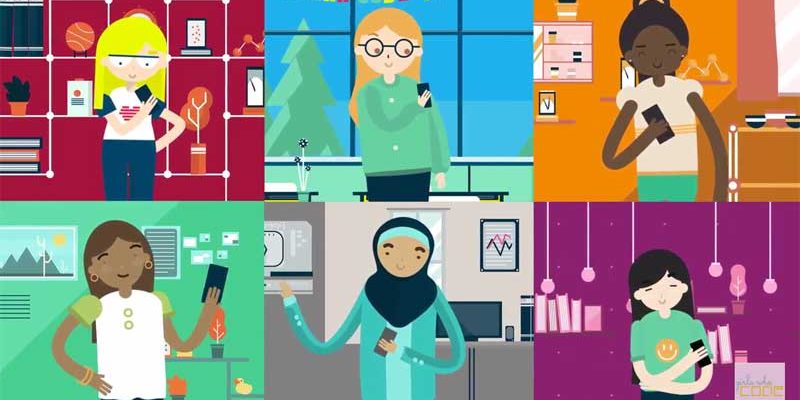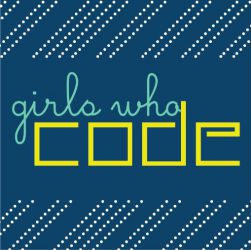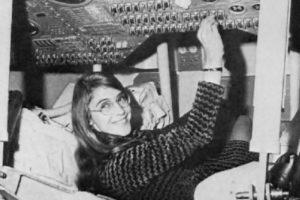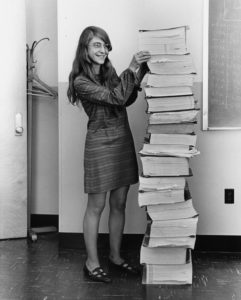If you know COBOL, then you must know Grace Hopper was the women behind creating that programming language!
Most of us remember seeing Rear Admiral Grace Murray Hopper on television. We recall a charming, tiny, white-haired lady in a Navy uniform with a lot of braid, admonishing a class of young Naval officers to remember their nanoseconds. The “nanoseconds” she handed out were lengths of wire, cut to not quite 12 inches in length, equal to the distance traveled by electromagnetic waves along the wire in the space of a nanosecond–one billionth of a second. In teaching efficient programming methods, Rear Admiral Hopper wanted to make sure her students would not waste nanoseconds. Occasionally, to make the demonstration even more powerful, she would bring to class an entire “microsecond”–a coil of wire nearly 1,000 feet long that the rear admiral, herself tough and wiry, would brandish with a sweeping gesture and a steady wrist.
The vividness of our impression of Hopper as a great teacher derives from these images. But, as computer pioneer Howard Bromberg has written, Hopper was much more. She was a “mathematician, computer scientist, social scientist, corporate politician, marketing whiz, systems designer, and programmer,” and, always, a “visionary.” After graduating from Vassar with a degree in mathematics in 1928, Grace Brewster Murray worked under algebraist Oystein Ore at Yale for her Ph.D. (1934). She married Vincent Foster Hopper, an educator, in 1930, and began teaching mathematics at Vassar in 1931.
Her best-known contribution to computing during this period was the invention, in 1953, of the compiler, the intermediate program that translates English language instructions into the language of the target computer. She did this, she said, because she was “lazy” and hoped that “the programmer may return to being a mathematician.”
Her work on compilers and on making machines understand ordinary language instructions led ultimately to the development of the business language COBOL. Hopper’s work also foreshadowed or embodied enormous numbers of developments that are still the very bones of digital computing: subroutines, formula translation, relative addressing, the linking loader, code optimization, and symbolic manipulation. At her death, she was an active consultant for Digital.
We are here to celebrate the achievements of women in computing and to pledge ourselves to extend them. In computing more than other disciplines, women in the right place at the right time have made an enormous difference. If computing has led the way in making space for women’s participation on an equal basis, it is because the discipline was pioneered in large part by women like Grace Murray Hopper. What was true for Hopper is all the more true for women today because of her work.







